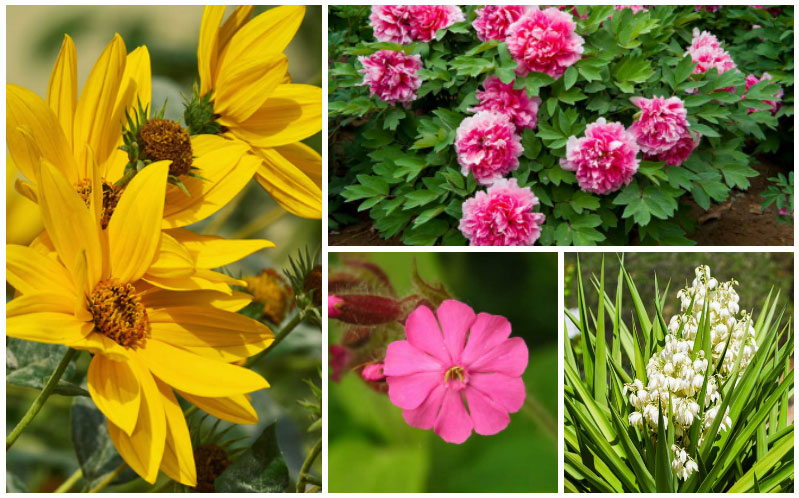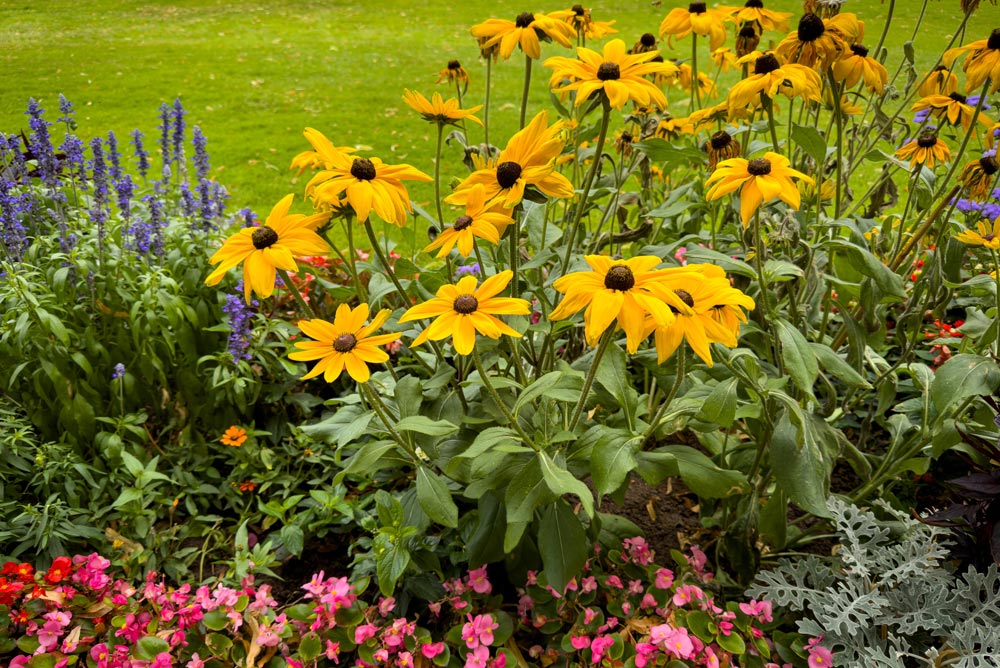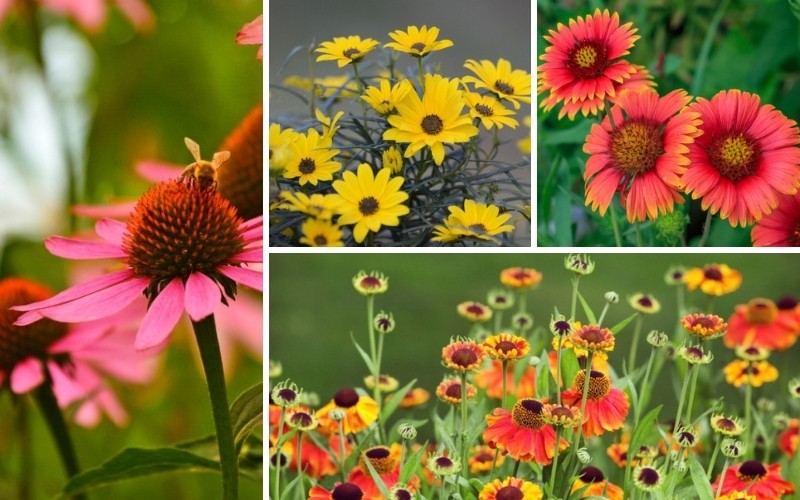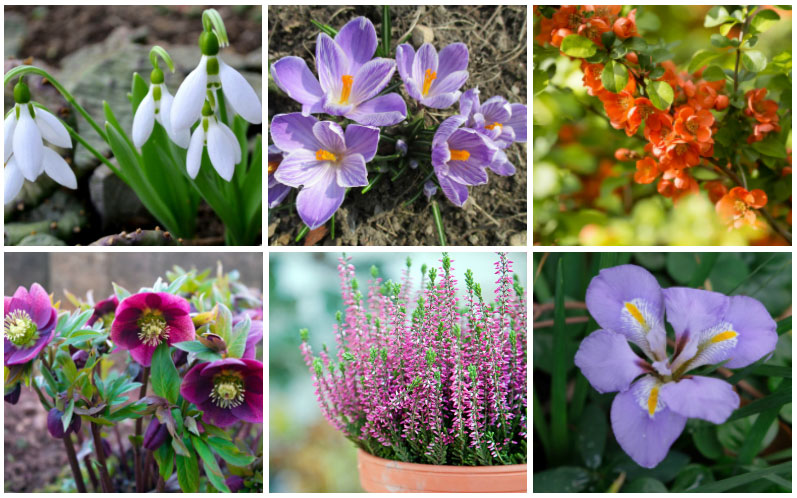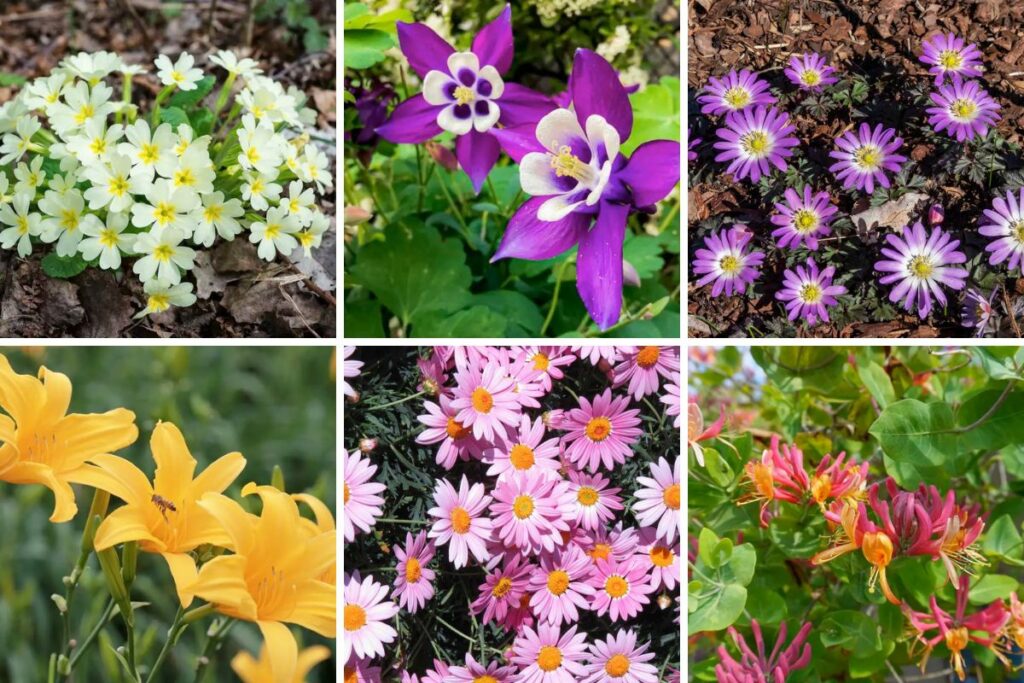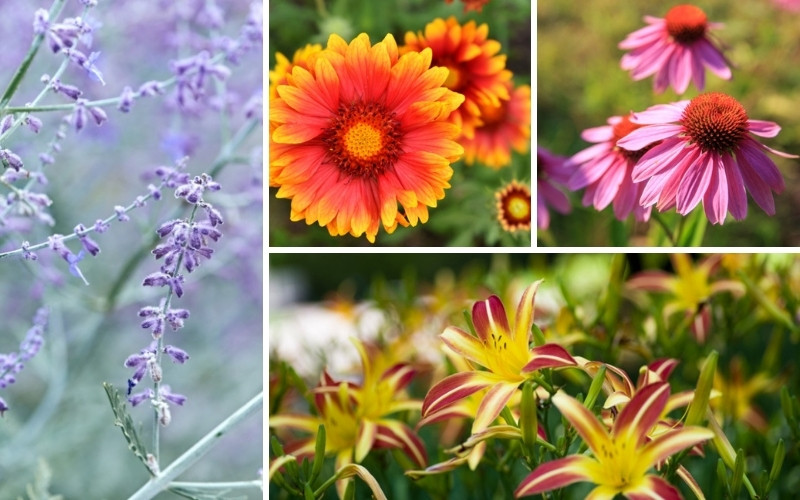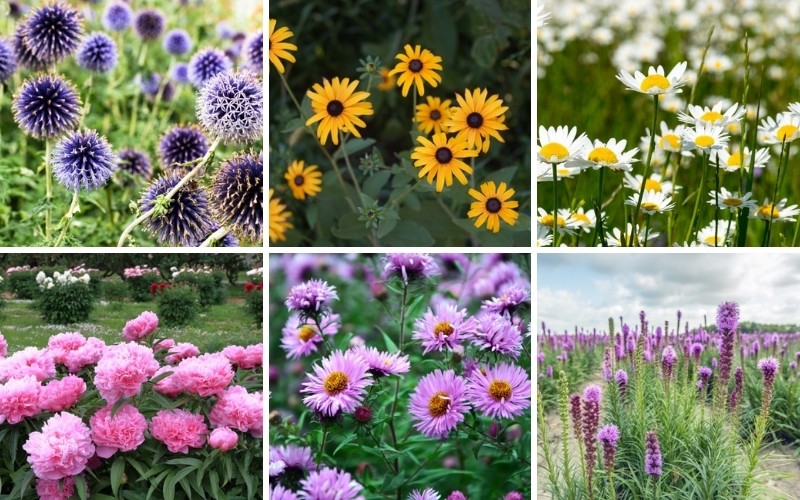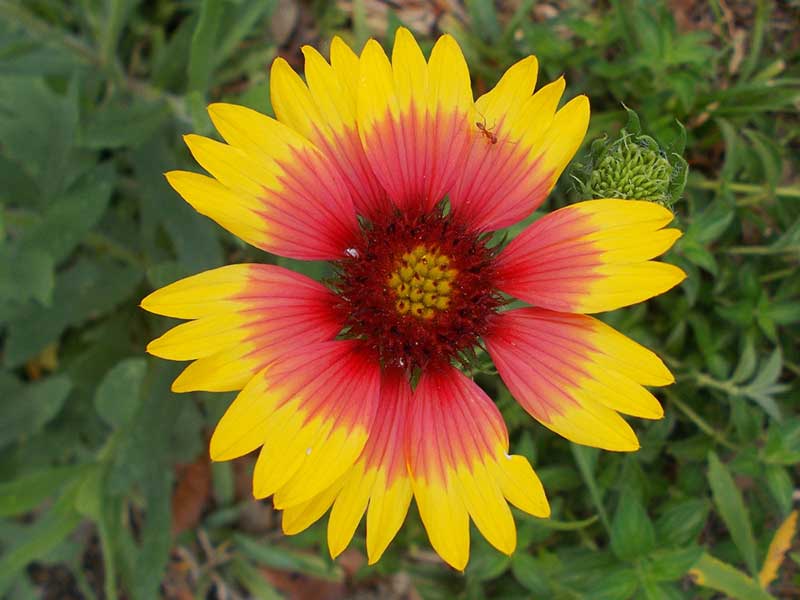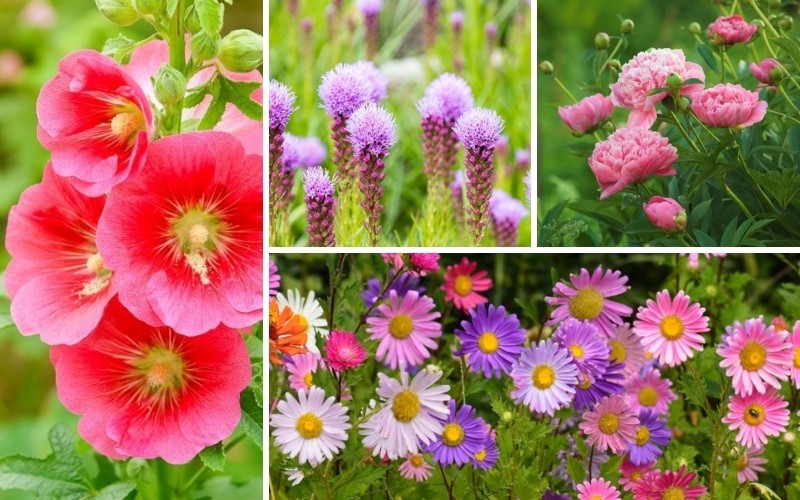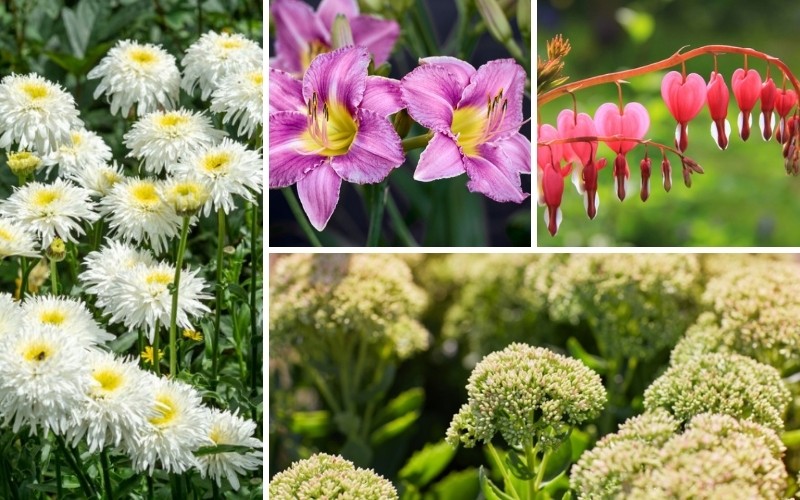
The state of Rhode Island encompasses USDA plant hardiness zones 5b through 7a making it suitable for growing a wide range of perennials in the flower bed.
It is important to understand your specific planting zone as some flowers that thrive in zone 7a may struggle with the colder winters in 5b.
The following perennials should do well in any part of Rhode Island, but hardiness can vary among cultivars of the same plant.
Matching the hardiness zone of the flower to your planting zone is vital to your success with growing a healthy perennial bed.
Peonies (Paeonia)
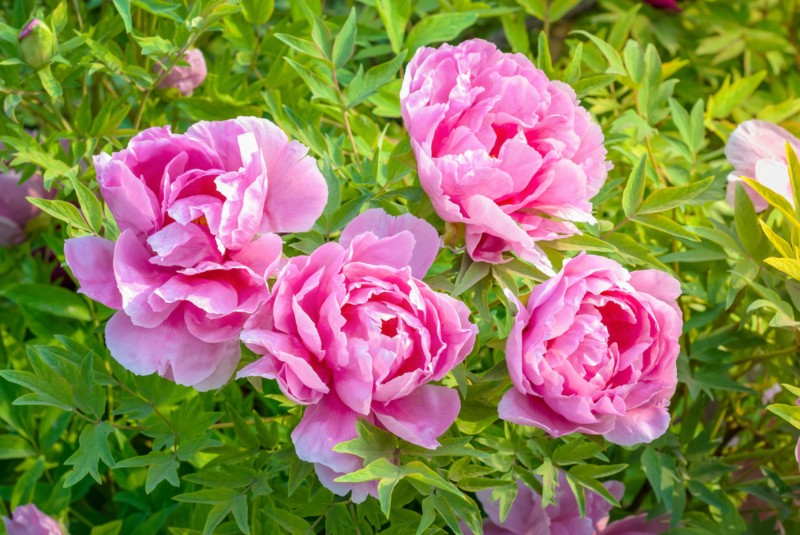
For bright spring color, peonies are hard to beat. These impressive flowers bloom in the late spring after spring bulbs have given up the show and before summer annuals take over. The large fluffy blooms range in color from white and pastel pinks to deep reds and rose with many bi-colors, too. They can be either single or double petaled and may feature a bright yellow eye. These flowers are prized for their showy blooms, intense fragrance and their beauty as a cut flower. They do require staking to support the weight of the blooms but are otherwise relatively carefree. Peonies grow to 2 to 4 feet in height and prefer full to partial sun. They are hardy in USDA plant hardiness zones 3 through 9.
Coneflowers (Echinacea spp.)
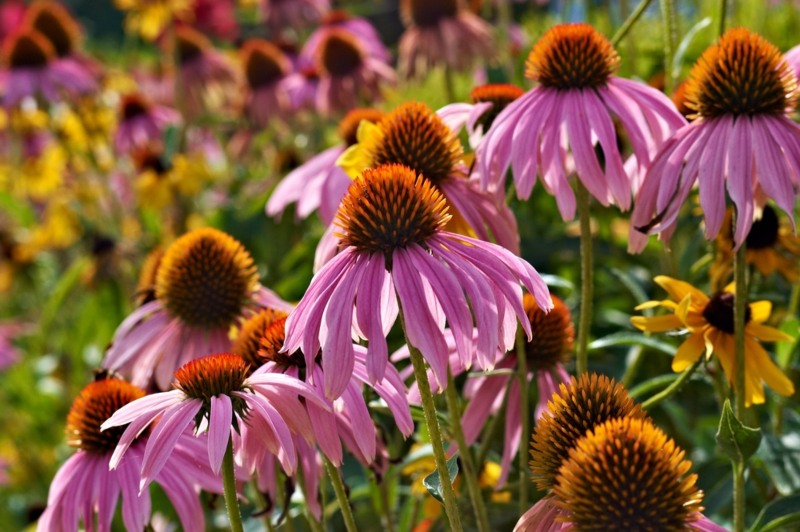
The mention of coneflowers typically conjures up images of the lovely purple coneflower with its striking orange cone in the center, but there are many varieties of coneflowers to choose from. Colors range from purple or pink to deep rose, cherry red and stunning shades of yellow and orange. All feature a contrasting cone of color in the center of the reflexed petals. These daisy-like flowers attract bees and butterflies and grow to heights of 2 to 4 feet. They prefer full sun and average, well-drained soil. They are hardy in USDA plant hardiness zones 3 through 8, depending on the cultivar.
Rudbeckia (Rudbeckia spp.)
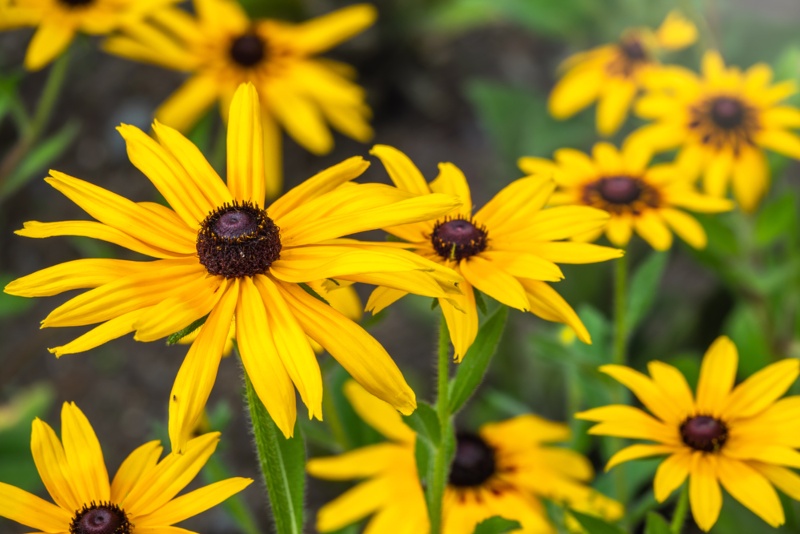
The traditional orange rudbeckia with a dark brown eye, often called Black-Eyed Susan, is always a good choice for the perennial bed, but you don’t need to stop there. There are many lovely cultivars of Rudbeckia available that will do well in your Rhode Island perennial bed. Rudbeckia varieties range from yellow petals with dark centers to lovely shades of orange, gold, bronze, red and variegated varieties. Rudbeckia can be either single or double petaled and grow to heights of 2 to 7 feet, depending on the variety. Most are hardy in USDA hardiness zones 4 through 8.
Daylilies (Henerocallis)
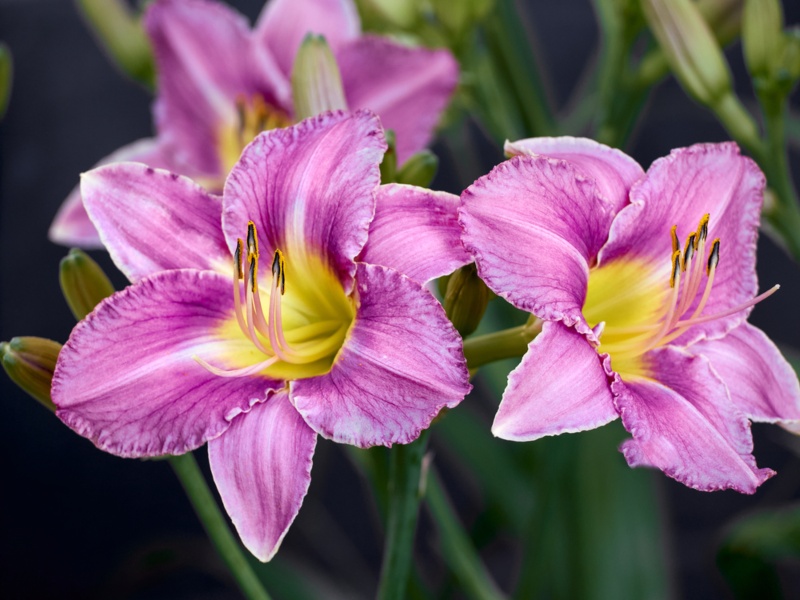
Daylilies are an easy-to-care for perennial that adds a splash of color to the landscape. These trumpet-shaped blooms come in a wide range of colors that run the gambit from yellow and orange to red, purple and blue with many stunning shades in between. Their blooming time ranges from late spring to late summer, depending on the cultivar. Planting early, mid-season and late-season bloomers together in the flower bed will create a never-ending parade of color in the bed. They prefer full sun to partial shade and thrive in average, well-drained soil. They are hardy in USDA plant hardiness zones 3 through 9.
Garden Phlox (Phlox paniculata)
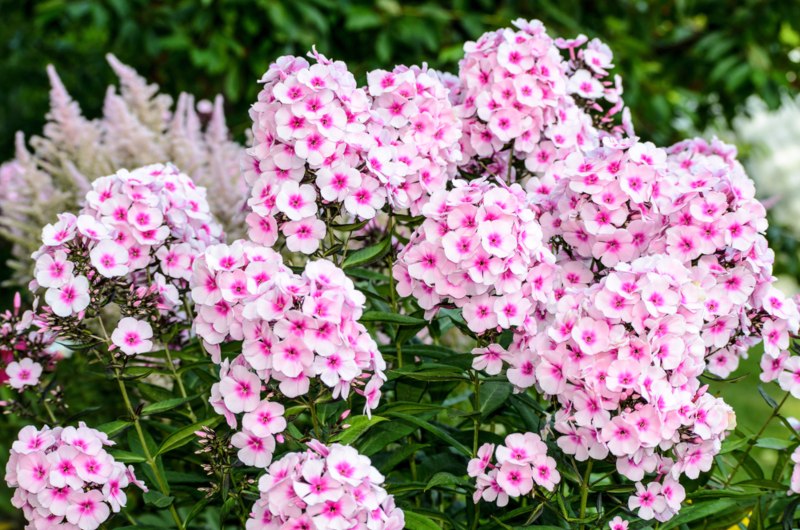
This old-fashioned favorite has graced the flowerbeds across America for decades. Its showy round heads with clusters of tiny blooms range in color from traditional white or magenta to wonderful shades or pink, rose, red and many dramatic bicolors, too. Phlox bloom from early summer until fall and attract bees and butterflies. Their sweet, heady fragrance perfumes the night air making them ideal for planting near the deck or seating areas. Phlox grow to heights of 2 to 4 feet. They prefer full sun and thrive in average soil. They are hardy in USDA plant hardiness zones 4 through 8.
Perennial Sunflowers (Helianthus spp.)
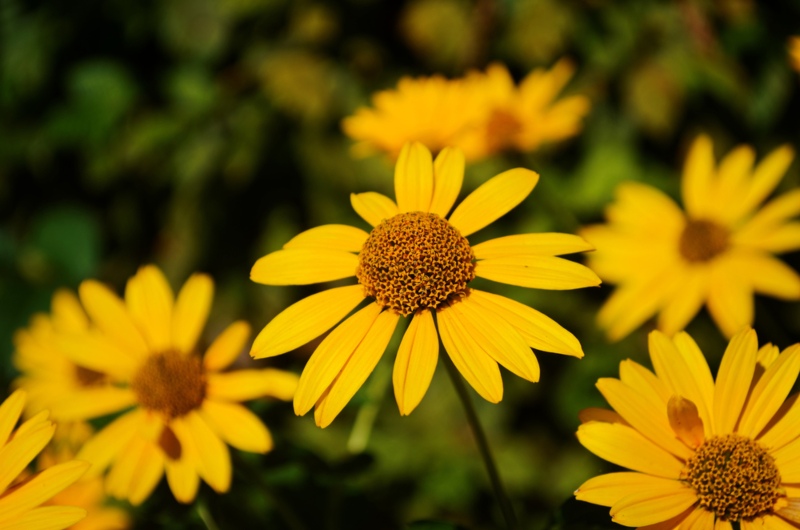
If you thought all sunflowers were annuals, you may be surprised to learn there are many varieties of perennial sunflowers that can be grown in your perennial bed. While they typically don’t produce large showy blooms like the traditional sunflower, they do produce impressive stands of daisy-like blooms that share the cheeriness of sunflowers. ‘Maximilian’ is a delightful variety that attracts hoards of bees and butterflies, while “Willow Leaf” produces masses of brilliant yellow blooms with traditional dark centers. Most perennials sunflowers are hardy in USDA plant hardiness zones 4 or 5 through 9.
Stonecrop (Sedum)
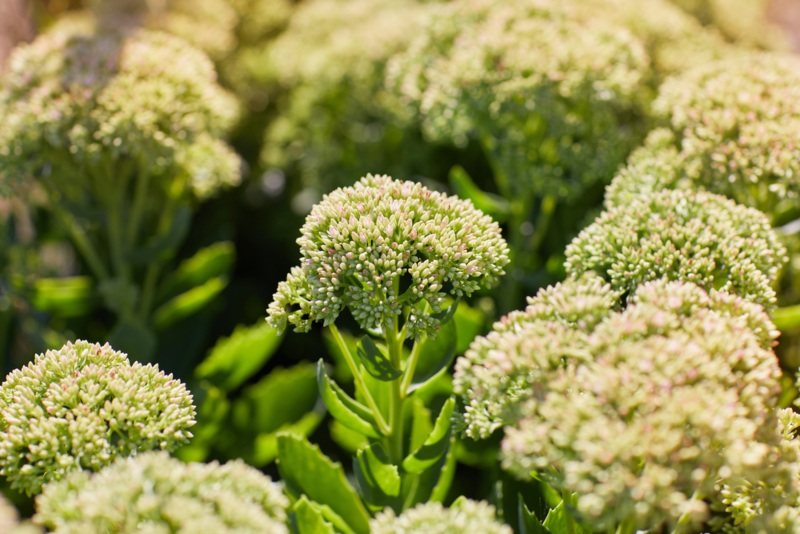
If late season color is on your list of must-haves in the perennial bed, stonecrop may be a good choice for you. This amazing plant produces huge, rounded heads of tiny flowers in shades of pink, white and red on contrasting blue-green or green foliage. Blooms open in mid to late summer, but their color continues to darken as fall approaches. Stonecrop grows to heights of 2 feet and prefers a location in full sun. It likes average soil and is hardy in USDA plant hardiness zones 3 through 9.
Speedwell (Veronica longifolia)
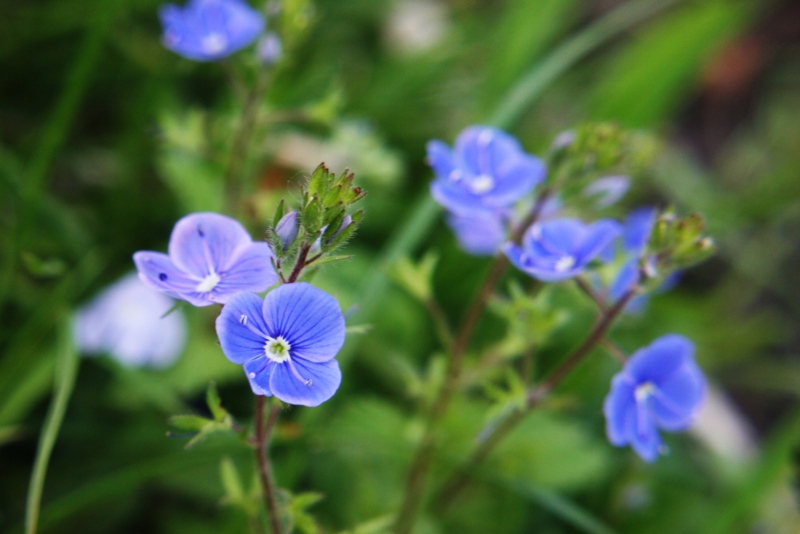
Speedwell brightens the flower bed in early to mid-summer as it sends up its graceful spires lined with tiny flowers that range in color from white and pink to lovely hues of purple and violet. The tip of the spike arches slightly as the buds open from the bottom up gradually filling out the spike. Speedwell grows to heights of 2 to 4 feet and works well in cottage gardens. It prefers full sun or partial shade and does well in nearly any soil. It is hardy in USDA plant hardiness zones 4 through 8.
Shasta Daisies (Leucanthemum x superbum)
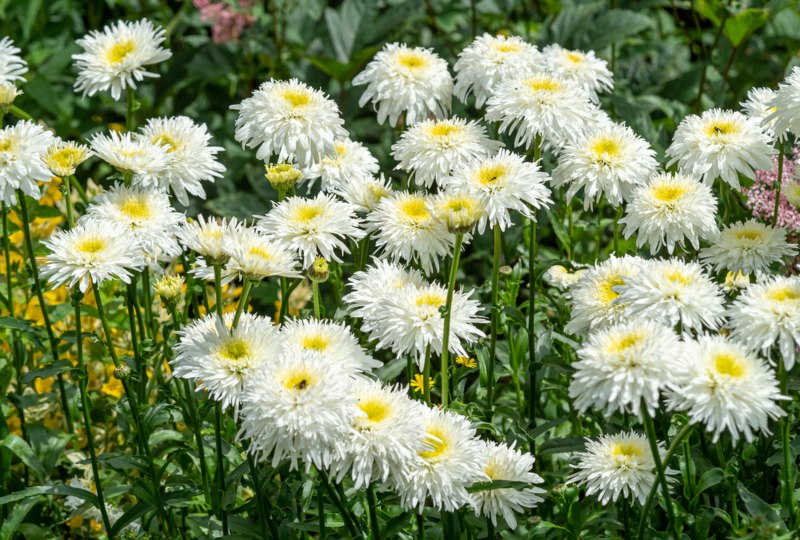
If you love the look of daisies floating gently in the summer breeze, then adding Shasta daisies to your perennial bed is a good choice for you. They resemble the wild oxeye daisy with larger and showier blooms. Shasta daisies work well in cottage gardens, but can also be used as borders or to line walkways. These impressive flowers brighten dull spots and thrive in either full sun or partial shade. They are hardy in USDA plant hardiness zones 5 through 9.
Bleeding Hearts (Dicentra spp.)
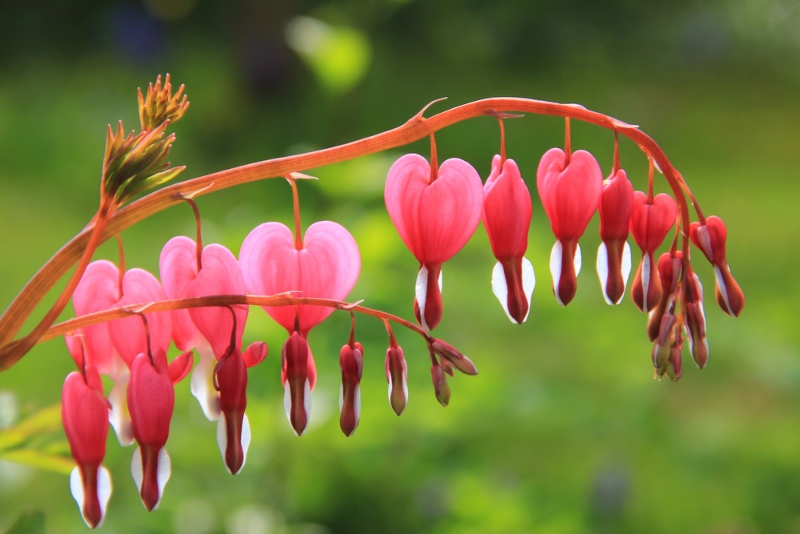
Bleeding hearts produce arching branches lined with delicate heart-shaped blooms that range in color from white to pink and deep red, often with a teardrop of white at the base giving the flower the impression it is bleeding. Most varieties of bleeding hearts bloom for 4 to 6 weeks in the spring, but some cultivars bloom all summer, while others rebloom periodically during the summer. Bleeding hearts prefer partial shade, but will grow in full sun. They are hardy in USDA plant hardiness zones 3 through 7.
Conclusion
Choosing the right perennials for your perennial bed can be a lot of fun, but bear in mind that new perennial plants may not bloom or may bloom sparingly the first year. Perennials typically take 2 to 3 years to become established and reach their mature size. Once established most perennials need to be divided every 3 to 5 years to avoid overcrowding. Always read the plant identification label carefully to determine if the perennial you are purchasing is a good match for your garden site.





